We hope that each of you, our readers, will enjoy and appreciate this article we present about these 5 Incredible Indian Ocean Species. It was certainly our pleasure to compile the information for you. May it provide you with both education and increased awareness.
These few species listed herein represent only a portion of the natural wonders found throughout the region, though. Yet, it’s our belief that they serve as excellent representations of the marvel found here. Check out some of our other articles for similar marvels.
Sei Whale
Sei Whale Facts
- Leading off this article about these 5 Incredible Indian Ocean Species we present you the majestic cetacean known as the Sei Whale.
- The simple term used here serves as the most frequently used common name for this remarkable mammoth of the seas. The impressive creature does have other titles, though, These include such names as the pollack whale and the Rudolphi’s rorqual.
- Within scientific circles, however, the animal’s much better known by its formal title. That’s a somewhat hard to pronounce term for the layperson, though. That’s because this wonder of evolution bears the official moniker of the Balaenoptera borealis.
- The mammal received that name due to the efforts of the French naturalist, René-Primevère Lesson. He accomplished the first official recognition of it as a separate and distinct species. He managed this scientifically noteworthy deed in the year 1828.
- It’s a massive species, ranking as the third largest extant animal on the planet. Despite its great size, though, it’s also one of the fastest of all cetaceans. Fortunately, this wonder of Nature and evolution is now protected by multiple international treaties.
- Even though it now enjoys protection, it still has a population base that’s significantly smaller than in previous centuries. That lamentable condition extends throughout the entirety of its natural range. The IUCN, thus, now lists it as Endangered on its Red List.
- It faces multiple threats to its continued existence. Most of these stem either directly or indirectly from the actions of humans. Illegal hunting still continues in some regions. Its greatest danger, though, most likely comes from ongoing climate change.
Sei Whale Physical Description
The magnificent Sei Whale easily impresses those individuals fortunate enough to view one. Unlike some creatures, however, they do so for more than just one reason. This masterpiece of evolution garners attention due to both its beauty and sheer physical measurements.
Like many of its relatives, it also displays a certain degree of the physiological characteristic of sexual dimorphism. In its specific case, that trait manifests itself in terms of pure size. More precisely, females of the species attain a greater size than their male counterparts.
Intriguingly, sizes of both genders varies depending upon what portion of its range they live in. Overall, though, males attain a maximum average length of approximately 61 ft (18.6 m). In the same region of the globe, females reach an average length equaling 64 ft (19.5 m).
Weights also vary between the different portions of its range, in both genders. But, in general, individuals weight between 33,069 – 44,093 lb (15,000 – 20,000 kg). Exceptional individuals do occur, of course, regardless of gender. Few exceed these sizes by much.
In terms of appearance, both sexes of the Sei Whale present the same general color scheme. The majority of the body displays a dark, steel gray hue. The underside, though, often presents small, irregular white or light gray markings, as well as sometimes the front.
The beak of the impressive creature usually develops as highly pointed in shape. The pectoral fins of the animal also develop as comparatively short. Each further displays a sharply pointed tip. It also possesses a pair of blowholes, just like most other baleen whales.
- Kingdom: Animalia
- Phylum: Chordata
- Class: Mammalia
- Order: Artiodactyla
- Family: Balaenopteridae
- Genus: Balaenoptera
- Species: B. borealis
Sei Whale Distribution, Habitat, and Ecology
The intrepid Sei Whale evolved as native to an extraordinary range of the marine waters of the world. That’s due to the fact that it appears in most oceans of the earth, as well as adjoining seas. The animal does, though, generally avoid tropical and polar waters.
Like many of its relatives, it additionally engages in seasonal migrations. Individuals typically relocate from colder to warmer regions for winter, and cooler one’s for summer. Even today, however, researchers remain uncertain of the precise routes the amazing whales take.
The majestic Cetacean also displays decided preferences in its choice of precise habitat. Due to this pattern, the vast majority of sightings occur in deeper marine regions. Individuals rarely stray into shallower regions near shore, or even semi-enclosed bodies of water.
Most commonly, this marvel of the seas travels singly. Small pods do form sometimes, though usually temporarily. When such groups do form, they rarely exceed six individuals. Researchers still know very little about the social structure of such short-term groups.
The Sei Whale evolved as a filter feeder, again like many of its relatives. Each specimen consumes an average of 2,000 lb (907 kg) of food per day. Its filtering action primarily catches vast quantities of zooplankton, along with a small number of tiny fish.
Mating occurs in either temperate or subtropical waters during the winter period. Females typically give birth to a single calf, most commonly every 2 – 3 years. Both genders reach sexual maturity at 8 – 10 years of age. A typical lifespan for both sexes is roughly 65 years.
Giant Clam
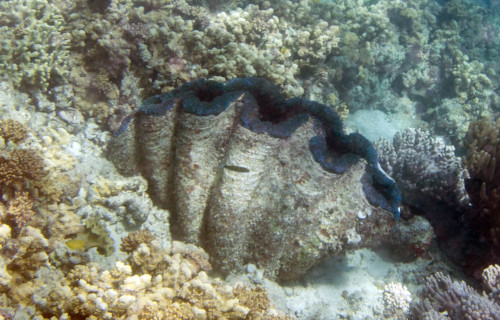
Giant Clam Facts
- Next up in this collection of 5 Incredible Indian Ocean Species comes the stunning invertebrate properly called the Giant Clam.
- This highly descriptive and appropriate term serves as the most frequently used common name for this impressive creature. For the moment, though, it has no other broadly accepted general name. Though certainly not unknown, that’s uncommon.
- Intriguingly, however, the name’s applied equally to all 10 members of the genus Tridacna. This understandably often leads to confusion. The title’s most commonly intended for one species, though, and that’s the species referred to in this article.
- Within scientific circles, it’s usually spoken of using its technical name, to avoid confusion. Thankfully for the layperson, that’s a comparatively easy term to pronounce. That’s because this wonder of evolution bears the formal moniker of Tridacna gigas.
- It further received that blessedly simple formal title due to the efforts of Carl Linnaeus. The eminent Swedish zoologist accomplished the first recorded recognition of it as a separate and distinct species. He managed this scientifically noteworthy deed in 1758.
- Unfortunately, however, the populatin numbers of the remarkable Giant Clam appears to be dwindling rapidly. That lamentable situation also seems to hold true throughout the entirety of its range. The IUCN, therefore, now lists the species as Vulnerable.
- The Mollusk now faces multiple threats to its continued existence as a species. Most of these stem from human activities. These include over exploitation of the creature for human consumption. It also faces the peril of habitat loss due to climate change.
Giant Clam Physical Description
The fascinating Giant Clam holds many claims to fame. Its sheer physical size, however, clearly represents its most famous attribute. Nonetheless, many of those fortunate to encounter it also respect the creature for some of its other qualities. Some may surprise you.
Unlike most forms of animal life on the planet, though, the principle of sexual dimorphism doesn’t really apply here. It sidesteps this physiological characteristic in a most unusual manner. That’s another manner in which this bivalve merits interest by the observer.
That’s true due to the fact that all individuals of this species are born male! Approximately three years later, those same specimens begin to develop female organs as well. Once the process is complete, at roughly five years of age, it’s a fully functional hermaphrodite.
All specimens therefore present the same general physical appearance. This pertains to both body shape, coloring, and size. Individuals sometimes attain weights of up to 440 lb (200 kg). These same impressive specimens often measure as much as 47 in (1.2 m) in diameter.
Each example of the Giant Clam develops either four or five vertical folds in that incredible shell. The border of its mantle is covered with several hundred eyespots that it uses to see with. Though only 0.02 in (0.5 mm) across, each contains 100 or more photoreceptors.
The outside of the shell varies in color between individuals. It’s also often covered in numerous coral structures, creating random patterns of appearance. The flesh inside, however, presents a dazzling mixture of yellow, green, and blue, and is often iridescent.
- Kingdom: Animalia
- Phylum: Mollusca
- Class: Bivalvia
- Order: Cardiida
- Family: Cardiidae
- Genus: Tridacna
- Species: T. gigas
Giant Clam Distribution, Habitat, and Ecology
The magnificent Giant Clam evolved as native to an area of the globe that’s both expansive and broken. The general area comprising that zone of habitation likely wont surprise many people. That’s because the animal principally lives in the Indian and South Pacific Oceans.
Yet, the creature also appears in the waters around the Philippines, in Asia. Another location in which it lives is in the waters off the Malaysian portion of Borneo, in the South China Sea. Presently, it’s unknown if it ever dwelled anywhere outside this region of habitation.
It’s reasonable to assume that it once lived in regions in between these scattered locations, though. The nature of that situation, however, possibly stems from its decidedly clear preferences in its choice of habitat. That obviously plays a pivotal factor in its location.
The intriguing product of Nature and evolution lives almost exclusively in one of two related types of area. These consist of either regions of broken coral or flat coral sand. It also limits its presence to shallow depths. It’s not known to exist beyond depths of 66 ft (20 m).
Just like its various kindred around the world, the Giant Clam evolved as a filter feeder. It mainly consumes zooplankton and phytoplankton. While it feeds, however, symbiotic algae, provide it with a secondary source of nutrition through their own metabolic processes.
Although hermaphroditic in nature, individuals do not self-fertilize. Durin spawning, each individual releases both sperm and eggs into the water. This then blends with that of others, and the process of live begins. Fertilized eggs sink to the ocean floor after about one week.
Leatherback Sea Turtle
Leatherback Sea Turtle Facts
- Placing third in this gathering of 5 Incredible Indian Ocean Species, the fabulous Leatherback Sea Turtle does so only due to random selection.
- The most notable statistic about the truly magnificent creation of nature and evolution remains the fact that it ranks as a legitimate giant of its kind. In point of fact, this truly fabulous animal presently lists as the largest of all known living turtles.
- This remarkable and quite impressive creature also constitutes the fourth heaviest of all living reptiles. Only three of the modern crocodilians surpass it in terms of sheer weight, which remains quite an accomplishment for it.
- The fascinating animal further distinguishes itself from all other sea turtles in another manner, as well. This holds true since the amazing sea reptile represents the only known species of its kind that does not possess a bony shell.
- Sadly, however, the Leatherback Sea Turtle now finds itself facing threats to its existence. As a result, the IUCN now lists it as Vulnerable, on its Red List of Threatened Species. The main threats include chemical and plastic pollution, and boat strikes.
- Most regrettably, the estimated number of nesting females among this reptile has plunged dramatically since 1980. At that time, these numbered about 115,000. Currently, however, that number has dropped to fewer than 43,000.
Leatherback Sea Turtle Physical Description
Without question, in the minds of many, the mature Leatherback Sea Turtle represents a truly impressive sight to see. Some impressive individuals reach a total length of as much as 7.2 ft (2.2 m), and achieve a weight often reaching as much as 1,540 lb (700 kg).
Coincidentally, this breathtaking animal also has the longest front flippers of any turtle. These out-sized appendages average an astonishing length of 8.9 ft (2.7 m). That measurement makes them the longest both in sheer length and relative to body size.
In coloring, the fabulous reptile also displays a dual pattern to its appearance. Its upper carapace typically shows a combination of black and dark gray, while the underside of the body generally presents a significantly lighter color scheme.
It is the outer covering of the Leatherback Sea Turtle, however, that separates it from all others. That’s due to an amazing divergence of evolution. Instead of a bony shell, this creature has a covering of extremely thick, tough leathery skin to protect it.
- Kingdom: Animalia
- Phylum: Chordata
- Class: Reptilia
- Order: Testudines
- Family: Dermochelyidae
- Genus: Dermochelys
- Species: D. coriacea
Leatherback Sea Turtle Distribution, Habitat, and Ecology
It must be pointed out that, thankfully, the marvelous Leatherback Sea Turtle has an almost global range. The majority of its population occurs in the tropical and subtropical oceans. Its range, however, extends from the Arctic Circle to Cape Agulhas, in Africa.
Its population numbers, though, appear to be mainly concentrated in three primary populations. Not only that, but each of these remains slightly genetically distinct from the others. These occurs in the Atlantic, western Pacific, and eastern Pacific oceans.
Each of these do share many of the same traits, however. Firstly, all prefer to inhabit the open ocean. Secondly, all tend to follow their prey as it moves during the day. This often results in it moving from deep water during the day to shallower regions at night.
In an interesting twist, juveniles typically prey on various small species for their food, while the adults feed almost exclusively on various types of jellyfish. In contrast, mature adults has few natural predators. The few include orcas and large sharks.
Despite all these facts, the Leatherback Sea Turtle is perhaps best known for its nesting practices. Although most of its kind return to the exact beach of their birth, it remains less selective. For it, any beach in the same region seems to serve perfectly well.
Zebra Shark
Zebra Shark Facts
- Our next choice for inclusion in the compendium of 5 Incredible Indian Ocean Species is the magnificent fish named the Zebra Shark.
- In a strange turn of events, this fascinating ocean fish most frequently goes by the unusual, as well as deceptive, common name we’ve used here. For the moment, the remarkable sea-dwelling species has no other generally accepted common name.
- Professionals, such as researchers, meanwhile, typically refer to the creature by its scientific name. That term, however, as with many such creatures, remains somewhat hard to pronounce. That’s because its formal scientific name’s Stegostoma tigrinum.
- The first known official recording of it as a separate and distinct species took place in 1758, due to the efforts of the Dutch zoologist, Albertus Seba. He received the accreditation posthumously, however, since the man himself died several years earlier.
- Unfortunately, the population of this amazing creature appears to be declining. Moreover, this regrettable trend seems to hold true throughout the entirety of its known range. The IUCN, therefore, presently lists it as Endangered on its Red List.
- Presently, the leading culprit for its decline in population continues to be commercial fishing practices. This holds true because the natural wonder remains actively sought after across most of its range. It’s mainly sought for its meat, liver oil, and fins.
- The impressive Zebra Shark nevertheless faces other threats to its existnce, however. Habitat loss poses an increasing threat, as man intrudes into its domain, of course. Its greatest potential threat, though, likely comes in the form of ongoing climate change.
Zebra Shark Physical Description
The Zebra Shark certainly impresses its fair share of those who encounter the creature in its native habitat. It does not do so, however, due to sheer size. That’s because, in that particular respect, this marvel of Nature represents a roughly average-sized species of its kind.
It does differ from many of its brethren in that regard, however, This holds true due to the fact that this specific species does not display any noticeable degree of the physiological characteristic of sexual dimorphism. This makes distinguishing the genders difficult.
The two sexes therefore present virtually identical sizes and patterns of coloration. An average body length for a mature adult of either sex reaches roughly 8.2 ft (2.5 m). Exceptional specimens, however, do occasionally attain lengths of as much as 11 ft (3.5 m).
In general, furthermore, the body manifests a strongly cylindrical shape. The head usually develops as slightly flattened, and possessed of a blunt, short snout. Its eyes also develop as quite small, and appear on the sides of the head. The species manifests 5 gill slits.
The somewhat confusing name of the Zebra Shark derives from the appearance of the immature individuals. These manifest a distinctly differenct pattern of coloring that the adults. As the common name implies, the immature shark presents stripes, like a zebra.
The adults of the species, meanwhile, develop a different pattern as they age. Most mature individuals present a light background, typically various shades of tan. This, though, has a covering of numerous small spots. These markings appear a dark brown to black in color.
- Kingdom: Animalia
- Phylum: Chordata
- Class: Chondrichthyes
- Order: Orectolobiformes
- Family: Stegostomatidae
- Genus: Stegostoma
- Species: S. tigrinum
Zebra Shark Distribution, Habitat, and Ecology
Fortunately, the stunning Zebra Shark appears to be endemic to a relatively wide swathe of the oceans of the world. This further seems to hold true in comparison with many, though, certainly, not all known species of sharks. Yet its known range remains respectable.
More precisely, however, it seems to inhabit specific portions of the Indo-Pacific region. Within that range, though, it only makes its home in the tropical waters of the area. That range extends from South Africa, through the Red Sea, to India, and all the way to Australia.
In all the regions of its range that it appears in, however, the animal displays decided preferences for its choice of habitat. In this, it possesses two very specific requirements. The creature only lives in the intertidal zone, and lives as a bottom-dwelling species.
Within that habitation zone, though, individuals live their lives in various locations. Specimens appear at maximum recorded depths of no more than 203 ft (62 m). Most individuals, in fact, prefer shallower depths. These often swim along the continental shelf.
The Zebra Shark evolved as primarily nocturnal in nature. Most individuals remains sluggish by day, typically moving very little. These most often appear on the ocean floor, frequently facing into the current. This facilitates their breathing while minimizing movement.
By night, however, it transforms into an active, powerful swimmer and hunter. It mainly feeds on small fish, various crustaceans, and possibly sea snakes. Typically a solitary creature, it nevertheless occasionally bands together in large groups for unknown reasons.
Porites lutea
Porites lutea Facts
- Finishing up this article about these 5 Incredible Indian Ocean Species comes the fascinating creature known as the Porites lutea.
- The short and relatively simple term currently serves as the official scientific name of a variety of stony coral that’s evolved a unique behavioral pattern. For the moment, this marvel of Nature and evolution has no generally accepted common name.
- It held other scientific names in the past, though. The one it holds now is attributed to the combined work of two researchers. The scientists holding that scientifically noteworthy claim are the French researchers Henri Milne-Edwards and Jules Haime.
- This natural beauty represents only 1 of the more than 500 species placed within its genus. While it naturally bears many similarities to its relatives, it stands out due to the way in which it forms itself over time. That manner also makes for a remarkable sight.
- Fortunately, for the moment, this intriguing creature of the oceans appears to be maintaining a population base that’s both sizeable and stable. This further seems to hold true throughout the entirety of the known natural range of the Cnidarian.
- The IUCN, therefore, currently lists the Porites lutea as Least Concern on its Red List of Threatened Species. The remarkable animal does nevertheless faces certain potential threats. These naturally include habitat loss and the ongoing effects of climate change.
Porites lutea Physical Description
Like the vast majority of its kindred, the amazing Porites lutea evolved as a coloial creature. It therefore builds itself into massive shared structures. In the case of this specific species, however, those structures follow a general pattern, the reason for which remains unknown.
That’s because typically, the fascinating animal constructs either helmet-shaped colonies or hemispherical mounds. The sheer size of these structures further draw one’s attention. That’s due to the fact that these constructs attain diameters of as much as 13 ft (4 m).
The individuals creatures also build extremely close together, with the walls of each section being quite thin in nature. Most indivual specimens have a diameter of between 0.04 – 0.06 in (1.0 – 1.5 mm). The exterior of each structure also usually has a somewhat smooth texture.
The coloring of each composite construction of the Porites lutea also varies from site to site. Most commonly, though, this consists of either yellowish or a cream color. The precise location of each colony, however, often leads to the manifestation of other hues.
Due to this tendency, brighter shades do sometimes occur. These include a wide range of brighter colors. Such variations, though, most frequently appear when the colony appears in shallower waters. The precise reason for this, however, remains a bit of a mystery.
- Kingdom: Animalia
- Phylum: Cnidaria
- Class: Anthozoa
- Order: Scleractinia
- Family: Poritidae
- Genus: Porites
- Species: P. lutea
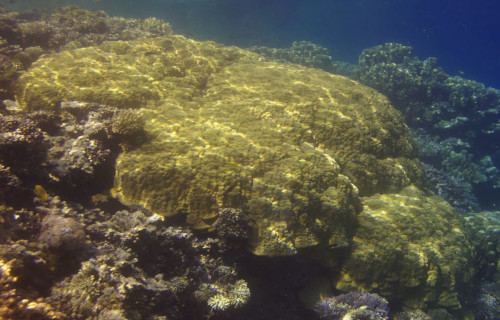
Porites lutea Distribution, Habitat, and Ecology
Fortunately, both for it, and for those of us who appreciate the beauty of Nature, the Porites lutea inhabits a relatively broad swathe of the globe. That’s due to the fact that its known habitat consists of much of the tropical portions of the Indo-Pacific Ocean.
More precisely, that range seems to begin near northern and eastern Australia. From there, it also spreads out to the waters around Japan, the Philippines, Indonesia, and Malaysia. It further extends its territory to as far as the east coast of Africa, and Madagascar.
Within that considerable expanse of oceans, though, its habitat preferences strongly limit the amount of territory it appears in. That holds true because the animal does not inhabit deep regions. It typically makes its home in regions such as lagoons and reefs.
These regions develop in what’s known as the tidal zone. That consists of the part of the ocean where it meets the land between the low and high tides. Here, the creatures frequently form structures often refered to as microatolls, remaining even if the animals die.
Such constructs generally contain the empty shells of deceased individuals located at or near the top of the mound or helmet-shaped colony. The living creatures, meanwhile, place themselves around the perimeter of the structure, as it grows, usually sideways.
Like its relatives, the Porites lutea feeds on a combination of algae living within their tissues, and small captured prey. The species also grows quite slowly, like others of its kind. The exact rate of growth, however, is strongly affected by the local environmental conditions.
5 Incredible Indian Ocean Species
We hope that each of you enjoyed reading, and hopefully learning from, this article we’ve written about these 5 Incredible Indian Ocean Species. It’s also our hope that doing so has left you with either a new or renewed appreciation for such wonders of Nature.
Unfortunately, however, many of their kindred around the world now find themselves facing strong threats to their continued existence as a species. Many of those dangers, in fact, stem from the actions of mankind. We must do all we can to protect and preserve them all.
Check out our other articles on 7 Intriguing South Carolina Insects, Earth’s Many Stunning Waterfalls, 3 Surprising Sahara Desert Sites, Breathtaking Asian Species
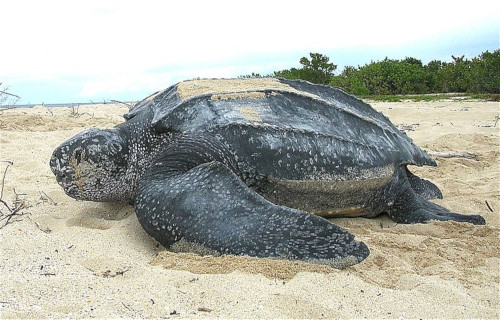
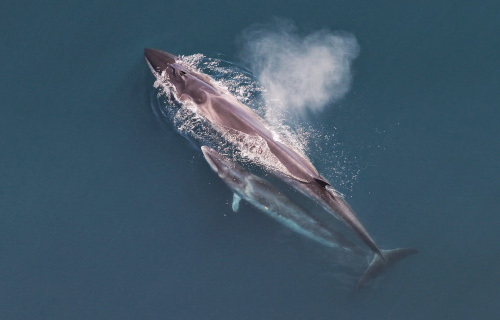
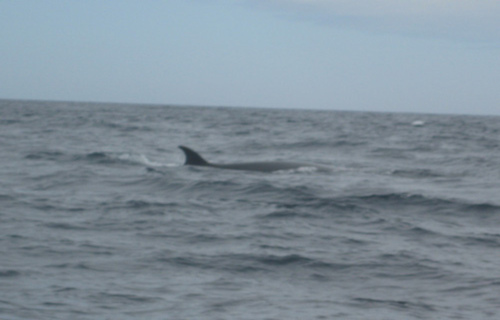
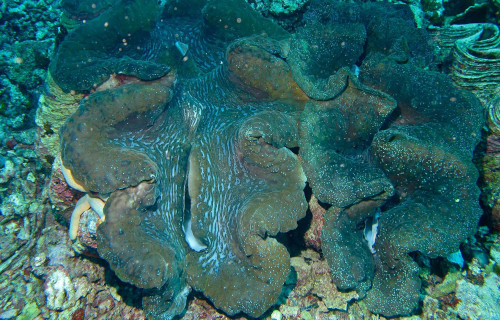
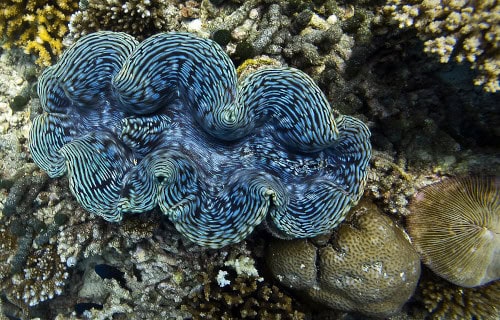
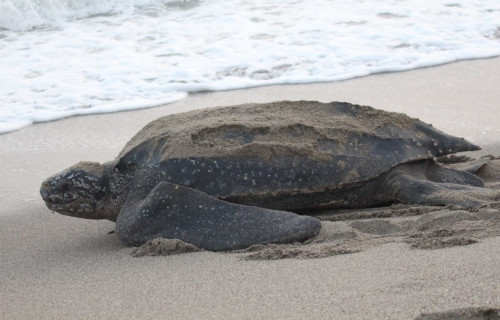
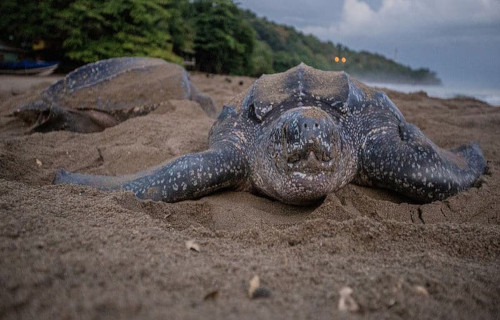
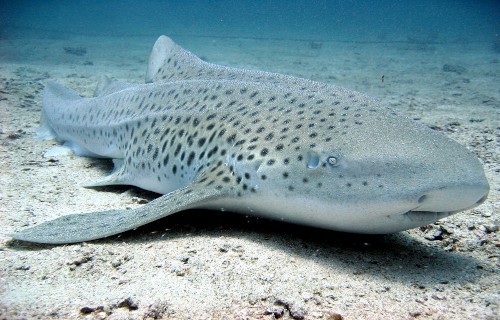
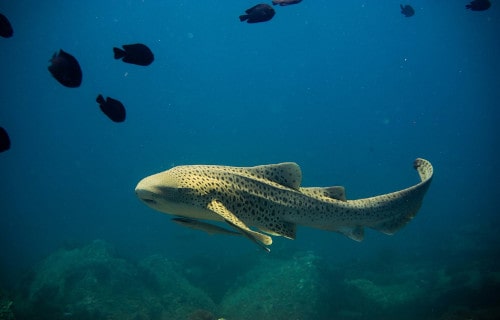
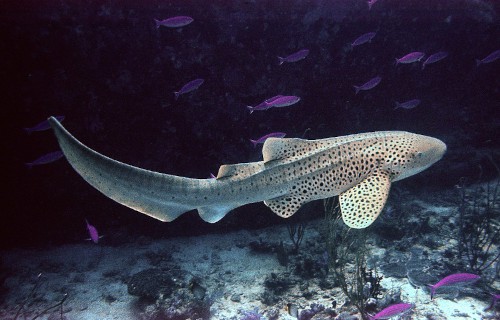
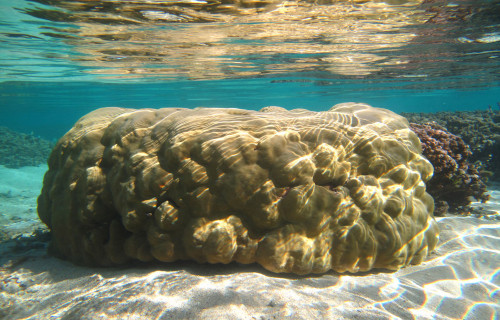
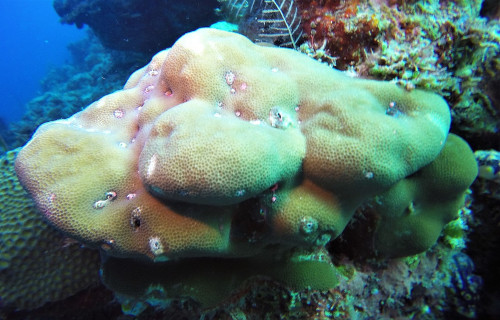









Leave a Reply